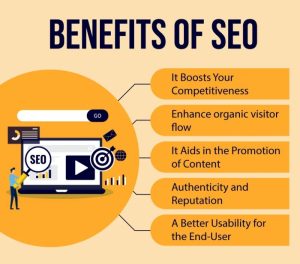
Embark on a journey into the world of e-commerce website development, where the key to success lies in creating user-friendly interfaces and captivating designs. Get ready to explore the essential features, successful examples, and more in this thrilling adventure!
E-commerce Website Development
When it comes to e-commerce website development, having a user-friendly interface is crucial for attracting and retaining customers. A user-friendly interface ensures that visitors can easily navigate the website, find products they are looking for, and complete purchases without any hassle. This ultimately leads to a positive user experience and increased sales.
Key Features in E-commerce Website
Some key features that should be included in an e-commerce website are:
- Mobile Responsiveness: With the increasing use of mobile devices, it is essential for e-commerce websites to be optimized for mobile users.
- Search Functionality: A robust search feature allows users to quickly find the products they are looking for.
- Secure Payment Gateway: Providing a secure payment gateway builds trust with customers and ensures that their financial information is safe.
- Product Reviews and Ratings: Including product reviews and ratings helps customers make informed purchasing decisions.
- Easy Checkout Process: Simplifying the checkout process reduces cart abandonment rates and improves conversion rates.
Examples of Successful E-commerce Websites
Some examples of successful e-commerce websites and what makes them stand out include:
- Amazon: Amazon’s user-friendly interface, personalized recommendations, and fast shipping options make it a top choice for online shoppers.
- Etsy: Etsy’s focus on unique, handmade products and a community of sellers and buyers sets it apart in the e-commerce space.
- Zappos: Zappos’ excellent customer service, free shipping, and easy returns policy have helped it become a leader in online shoe sales.
Web Design and Development

When it comes to creating an e-commerce website, web design and web development play crucial roles in ensuring a user-friendly and visually appealing online store. Let’s delve into the differences between these two aspects and explore some tips for choosing the right design elements for your e-commerce site.
Differentiating Web Design and Web Development
Web design focuses on the aesthetics and user experience of a website, including layout, color schemes, typography, and visual elements. On the other hand, web development deals with the technical aspects of building and maintaining the website, such as coding, functionality, and performance optimization.
Tips for Choosing Color Schemes and Typography
- Consider your brand identity: Choose colors and typography that align with your brand’s identity and values to create a cohesive look and feel.
- Use a limited color palette: Stick to a few complementary colors to avoid overwhelming visitors and maintain a clean, professional design.
- Ensure readability: Select legible fonts and font sizes for easy reading across different devices and screen sizes.
- Test for accessibility: Check color combinations for accessibility standards to ensure that all users can easily navigate your site.
Significance of Responsive Design
Responsive design is essential for e-commerce websites as it ensures a seamless user experience across various devices, including desktops, laptops, tablets, and smartphones. By optimizing your site for responsiveness, you can reach a wider audience and improve conversion rates by providing a consistent and user-friendly shopping experience regardless of the device used.
Making Money Online
In the world of e-commerce, there are various strategies to monetize your website and generate revenue. From affiliate marketing to sponsored content, there are endless possibilities to make money online.
Monetization Strategies
- 1. Affiliate Marketing: Partnering with other businesses to promote their products on your site and earning a commission for every sale made through your referral link.
- 2. Sponsored Content: Collaborating with brands to create sponsored posts, reviews, or articles that promote their products or services.
- 3. Advertisements: Displaying ads on your website through platforms like Google AdSense to earn money based on clicks or impressions.
- 4. Subscription Services: Offering premium content or services for a fee, providing exclusive access to members.
Importance of in E-commerce
Search Engine Optimization () plays a crucial role in driving organic traffic to your e-commerce website, increasing visibility, and ultimately boosting sales. By optimizing your website’s content, s, and meta tags, you can improve your search engine rankings and attract more potential customers.
Successful Online Businesses and Monetization
- 1. Amazon: The e-commerce giant monetizes its platform through product sales, advertising, and subscription services like Amazon Prime.
- 2. Etsy: The online marketplace for handmade and vintage goods generates revenue through listing fees, transaction fees, and promoted listings.
- 3. Shopify: The e-commerce platform allows users to create online stores and monetizes through subscription plans, transaction fees, and additional services.
Directory
, or Search Engine Optimization, plays a crucial role in improving the visibility of an e-commerce website. By optimizing various elements on the website, it becomes easier for search engines to crawl and index the site, ultimately leading to higher rankings in search results.
Optimizing Product Descriptions and Images
When it comes to optimizing product descriptions and images for better search engine rankings, there are a few key tips to keep in mind:
- Use relevant s: Incorporate appropriate s in product descriptions to make it easier for search engines to understand the content.
- Optimize images: Ensure that images are of high quality, properly sized, and include descriptive filenames and alt text to improve visibility in image searches.
- Provide unique content: Avoid using duplicate product descriptions as this can negatively impact . Write unique, engaging content for each product.
Impact of Backlinks and Internal Linking
Backlinks, which are links from other websites to your e-commerce site, play a significant role in . Quality backlinks from reputable sources can improve your site’s authority and credibility in the eyes of search engines. Internal linking, on the other hand, helps search engines navigate your site more easily and can improve the overall user experience.
End of Discussion

As we reach the end of our exploration into e-commerce website development, we’ve uncovered the secrets to crafting engaging sites that drive sales. From user-friendly interfaces to effective strategies, this journey has been both enlightening and inspiring.
Common Queries
How important is a user-friendly interface in e-commerce website development?
A user-friendly interface is crucial as it enhances the overall shopping experience, leading to higher conversion rates and customer satisfaction.
What are some key features that should be included in an e-commerce website?
Key features include secure payment gateways, intuitive navigation, mobile responsiveness, product filters, and customer reviews.
How can improve visibility for an e-commerce website?
can boost search engine rankings, drive organic traffic, and increase the site’s visibility to potential customers.




